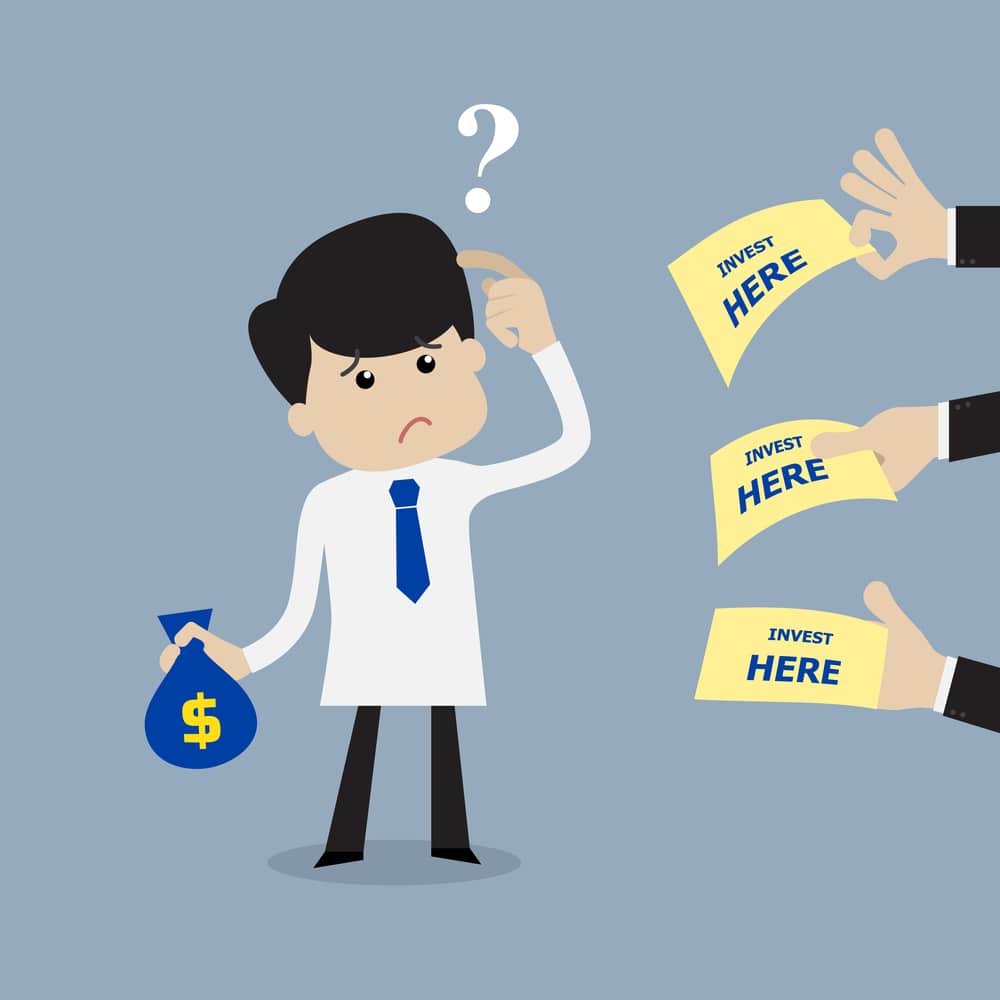
Investing In ETFs For Beginners And Students
Looking for a beginner-friendly way to enter the world of investing? Want to secure a diverse portfolio with low-effort maintenance? ETFs are a great place to start. Otherwise known as exchange-traded funds, ETFs are a form of investment fund that allows you to bundle several stocks and bonds.
This grouping of funds usually comes with low management fees and is a great way to diversify your portfolio with convenience and flexibility. Plus, ETFs come with a low barrier to entry; people who are 18 years or older can start their investment journey with ETFs. Let’s explore the world of investing in ETFs for beginners and for students.
How Do Exchange-traded Funds (ETFs) Work?
As an investor in ETFs, you don’t directly own the underlying assets. Instead, fund providers such as Vanguard and Bank of Montreal are the owners. That’s because investors buy into the ETF portfolio instead of owning the individual assets.
Since you are the owner of a specific share of these assets, your portfolio is diverse by design and gives you access to many different stocks and bonds.
You may be wondering how ETFs payout to investors. Many of them are paid in dividends and interest on a quarterly basis. These cash-outs can happen in the form of cash or can be reinvested in the market again. These payouts align with the performance of the particular index or sector that the ETF tracks.
Are ETFs Good for Students?
ETFs for students can be a fantastic way of entering the world of investing. For those who are starting to invest for the very first time, ETFs offer several unique perks that allow students and beginners to familiarize themselves with investing and start growing their portfolios.
Specifically, ETFs provide the student with a diversified portfolio of stocks and bonds across various industries by owning just one investment product. ETFs are also a great choice for beginners because their management fees tend to be lower than the costs associated with mutual funds.
Additionally, ETFs are a form of passive investing with low effort needed. ETFs for beginners are a great way to earn returns on the side while not having to actively manage the investments themselves. This makes them perfect for busy students who are preoccupied with classes and schoolwork.
So when it comes to setting yourself up for long-term investment success, ETFs can provide a low-effort and diversified investment for students or beginners who want to grow their experience and knowledge in the world of investing.
How Do ETFs Make Money?
ETFs are open-ended and traded in real-time at market-determined prices, and demand from investors determines the creation and redemption of ETF units.
Unlike mutual funds, the supply of ETF units in circulation is regulated by the process of ETF creation and redemption. According to Vanguard, ETFs follow an active trading process that operates at intervals throughout a trading day.
Should I Invest in ETFs?

When it comes to ETFs, you’re better off starting earlier rather than later. ETFs for students allow them to reap the benefits of accessible, low-maintenance investment in a way that can set new investors up for financial gains in the long run.
ETFs are an overall safer investment method for a long-term strategy. ETFs for beginners or students offer the unique benefit of being flexible and diverse with a low barrier to entry. They also cover the index in a way that allows you to take a hands-off management approach to a diverse portfolio.
Plus, you don’t need to conduct any in-depth research on which individual companies to invest in since the portfolio is managed for you.
In short, ETFs offer a solid option for those who want a portfolio with a low barrier to entry that can continue to grow in the long run. If you’d like to trade a bundle of investments with the flexibility of stocks and a hands-off, low-cost approach, then ETFs could be a great choice for you.
Just as with any stocks, the price does fluctuate and the price can go down just as it goes up. Investing in the stock market always involves some level of risk.
How Much to Invest in ETFs per Month?
You may be wondering how much you should invest in ETFs each month. Or maybe you’re worried that you won’t have enough funds to get started. But don’t worry. The good news is that ETFs don’t have a minimum monthly investment amount.
A good starting place is to take your current income into account and contribute as much as you’re comfortable with. Whether you’re investing $50 or $100 and above each month, investing what you can as a beginner or student will set you up for long-term success.
Understand that investing does cost a transaction fee so be aware of how you plan your transactions.
How Do I Invest in ETFs?
1. Brokerage Account or Financial Advisor
You’ll need a discount brokerage account in order to buy ETFs. You’ll also need to get a registered or non-registered investment account. Registered investment accounts come with certain tax benefits that are either tax-free or tax-deferred.
The brokerage will ask you to provide basic personal and employment information, some financial numbers (assets and liabilities), and a summary of your financial or investment knowledge. Then, you’ll provide some personal and employment information to the brokerage, and a summary of your investment knowledge.
Alternatively, you can invest through a financial advisor. When you invest in an ETF through a financial advisor, they will lead the investment of your portfolio for you. That way, you won’t have to spend time and energy monitoring and trading all the assets in your portfolio.
On the flip side, if you’re going through a self-directed brokerage account, you get to choose which ETFs to buy and further customize your portfolio. This method gives you further control over what your portfolio of assets looks like.
2. Fund Your Account & Choose Your Investment Plan
Now it’s time to create your investment plan. Here are a few important questions to ask yourself when formulating your plan for investing in ETFs.
- Risk: What is your threshold for gains and losses of your investment?
- Age: What is the duration of time over which you’d like your ETF to accrue gains?
- Time horizon: How long can you go before you need to access your ETF funds?
- Objectives: Are you seeking to preserve your capital or grow your portfolio?
These questions will help you understand your needs and goals when it comes to investing, and therefore guide you in the right direction for your ETF portfolio. Entering any investment opportunity with these questions in mind is an important component of long-term investment success.
Once you’ve decided on your investment plan, you can connect your bank account to add funds to your brokerage account.
3. Research ETFs
If you’re using a self-directed brokerage account, your next step is to research which ETFs to invest in. Here are a few key elements to research when choosing ETFs to add to your portfolio.
- Underlying assets: While some ETFs track specific indexes, others have a good split between equity and fixed income. Certain dividends offered by ETFs can have great yields, while some sector-oriented ETFs let you narrow your exposure.
- Fees: What is the Management Expense Ratio (MER) for the ETFs you’re looking at? Keep in mind that this could cut into your investment returns.
- Performance: Researching the past performance of ETFs is an important step. Comparing one ETFs past performance to another is a strategy many professionals use to reinforce their confidence in the performance of the chosen ETFs.
4. Buying ETFs
Finally, you’ll be able to place a trade on your desired ETFs. Here are a few different types of trade orders:
- Market order: Allows you to immediately buy or sell an ETF at the present best market price
- Limit order: Allows you to buy or sell ETFs at a specific price
- Stop order: Allows you to buy or sell ETFs when the stop price has been reached
To navigate the ETF choices, you’ll need to understand that each one is denoted with a symbol or name that’s unique to that asset. Once you find the asset you’d like to invest in, you can enter the number of units you’d like and follow your platform’s navigation to complete the transaction.
You should also receive a notification confirming once the purchase has gone through. You can then use that same platform to monitor your portfolio and investment progress over time.
Understanding the specific trading platform you’re working with will be critical to your investment journey. While the majority of them incorporate these basic terms and mechanisms, be sure to take your time and become familiar with the specific investment platform you use to buy and trade ETFs.
The Earlier You Invest the Better
Ultimately, you need to be 18 years or older to invest in ETFs. The earlier you can begin your investment journey the better because the more runway you give your investments to grow, the more opportunity your portfolio will have to gain value.
Whether you open a brokerage account or go through a financial advisor, ETFs for students are a fantastic way to gain a diverse portfolio that can help set you up for long-term gains.
By: Robert Puharich | August 29, 2022 |





